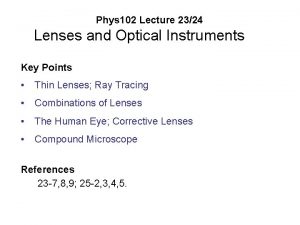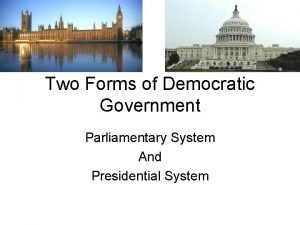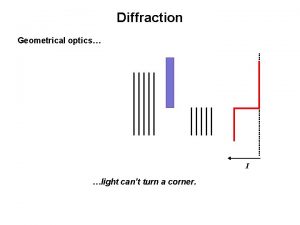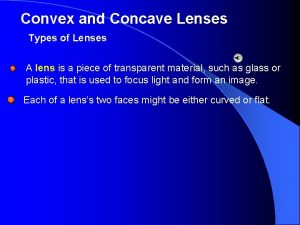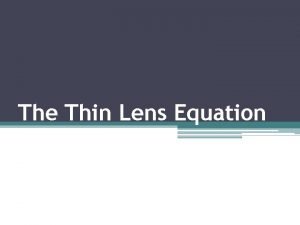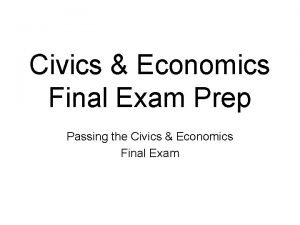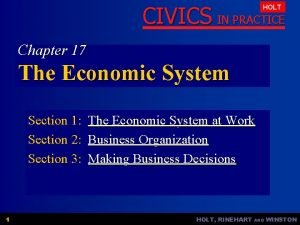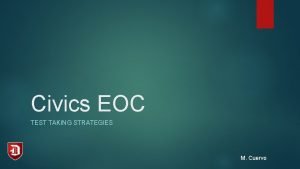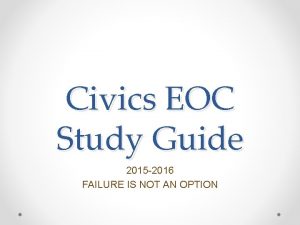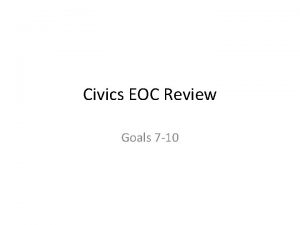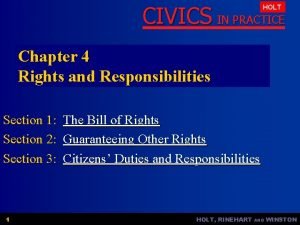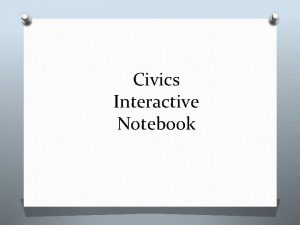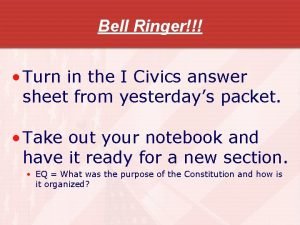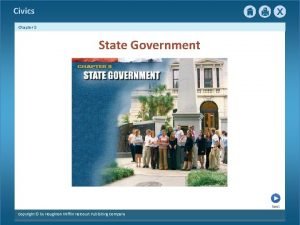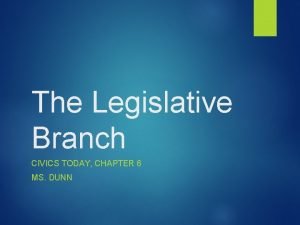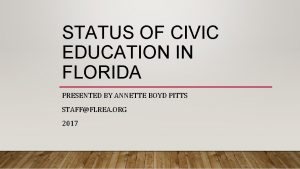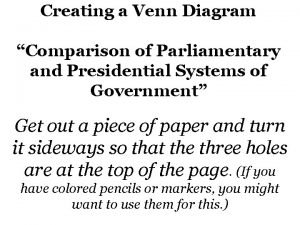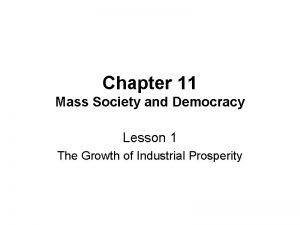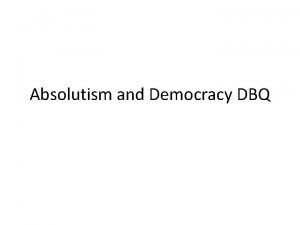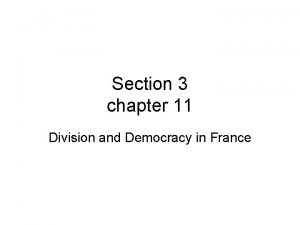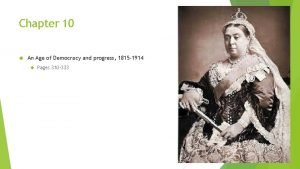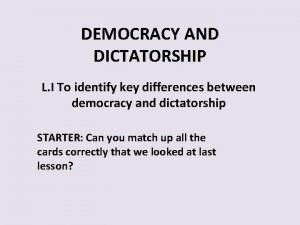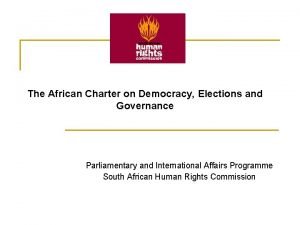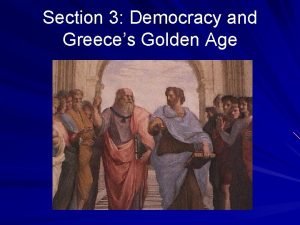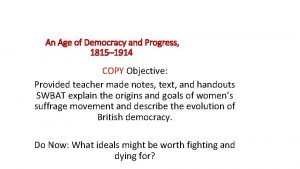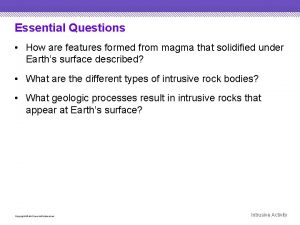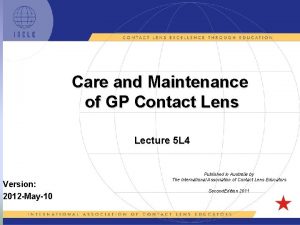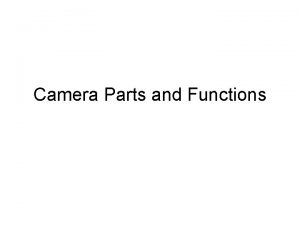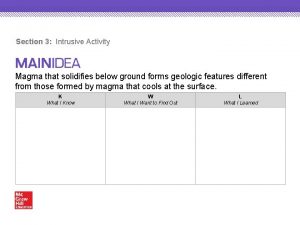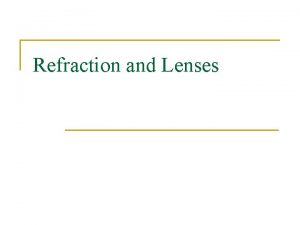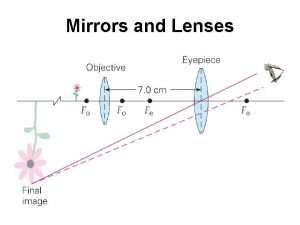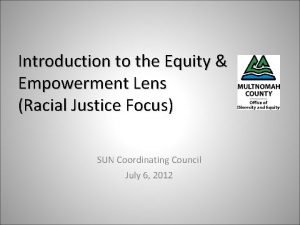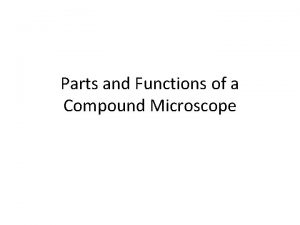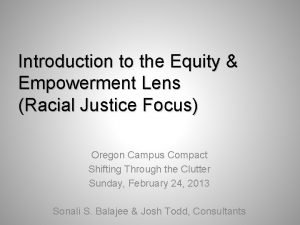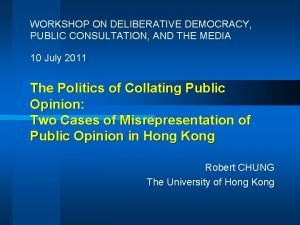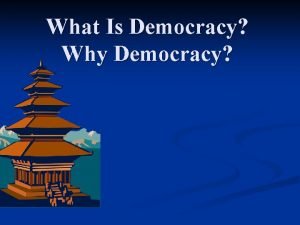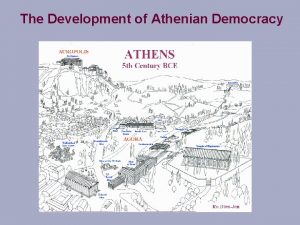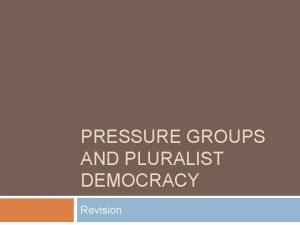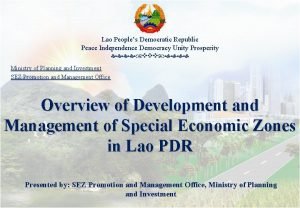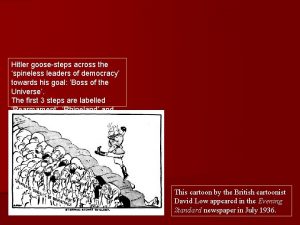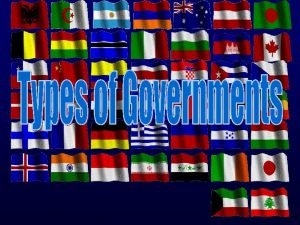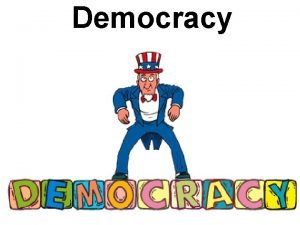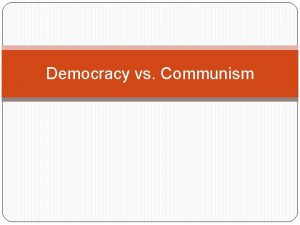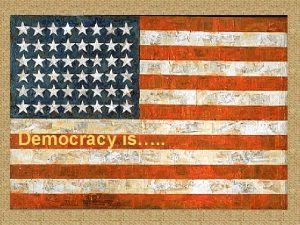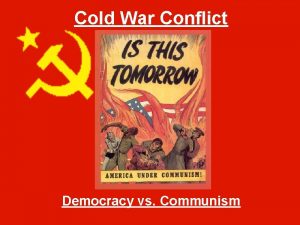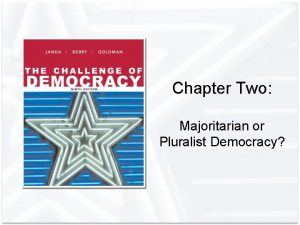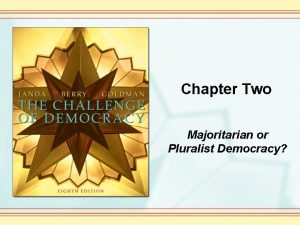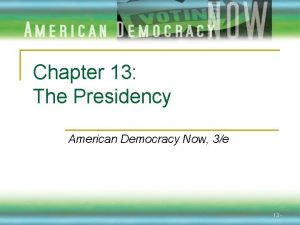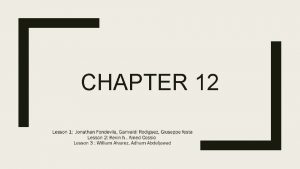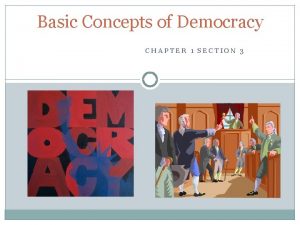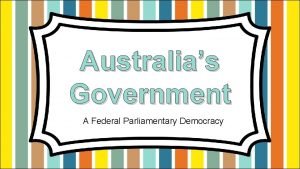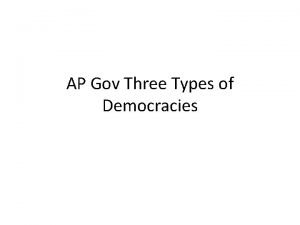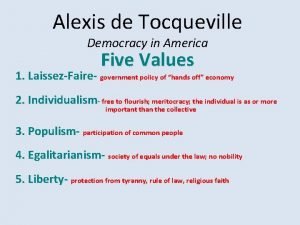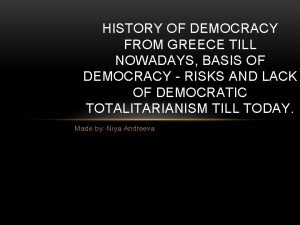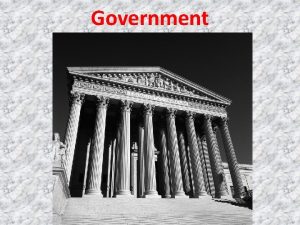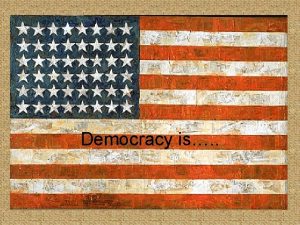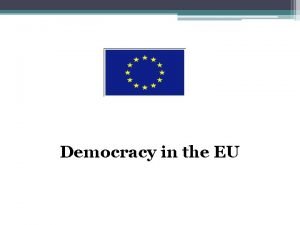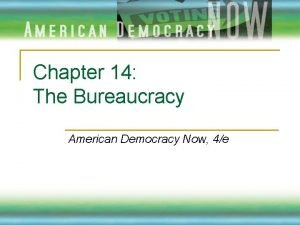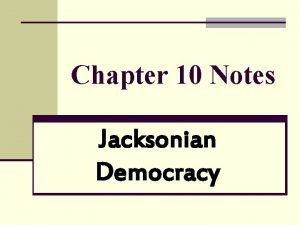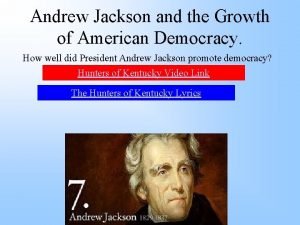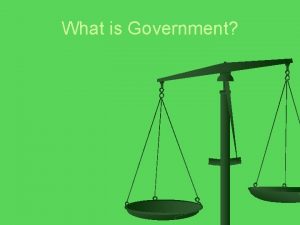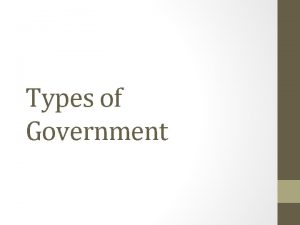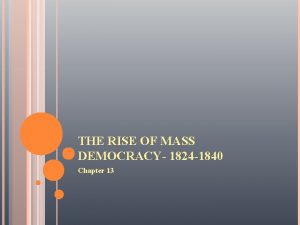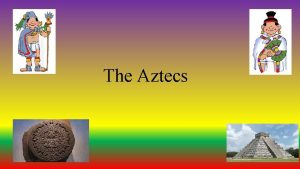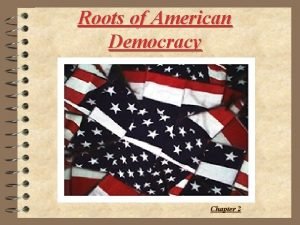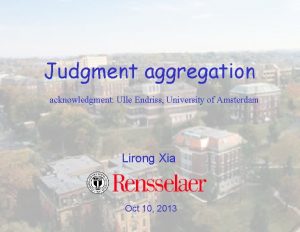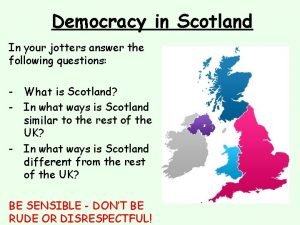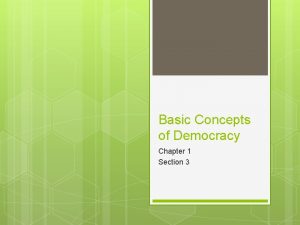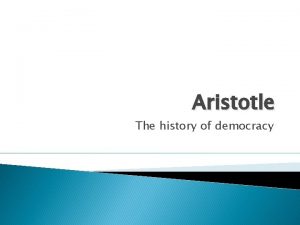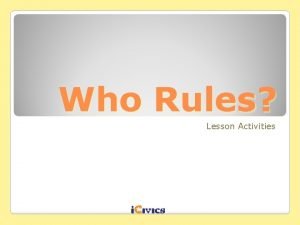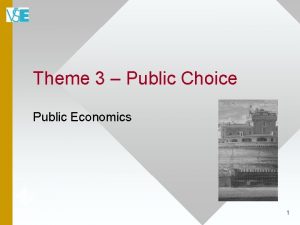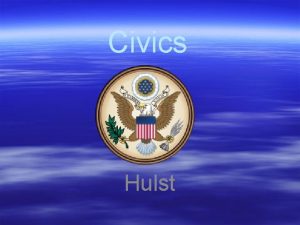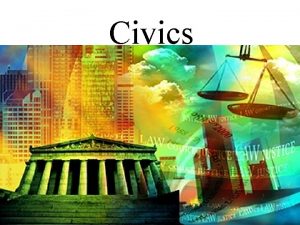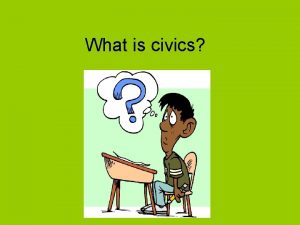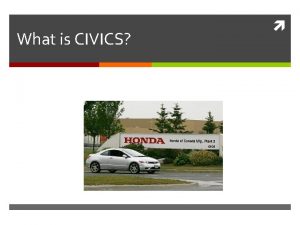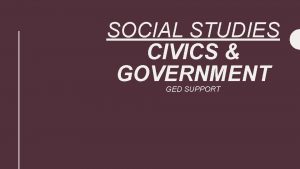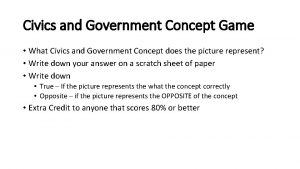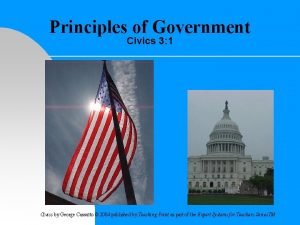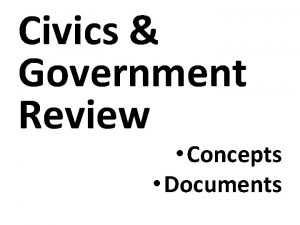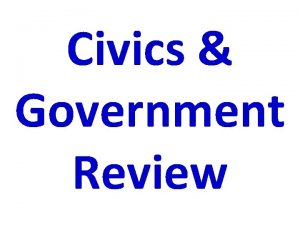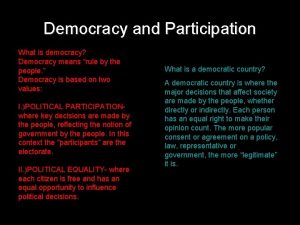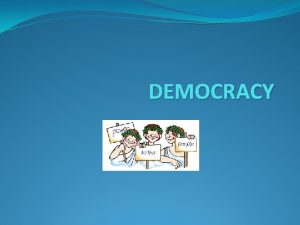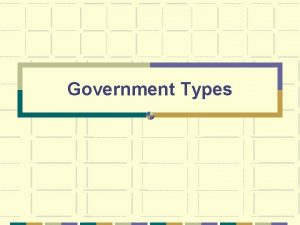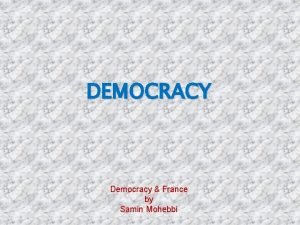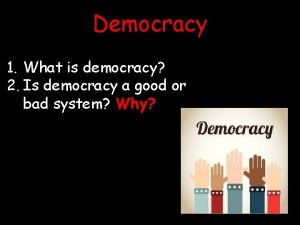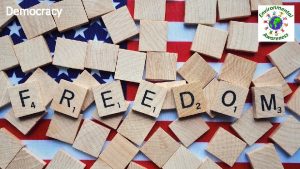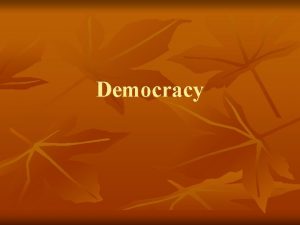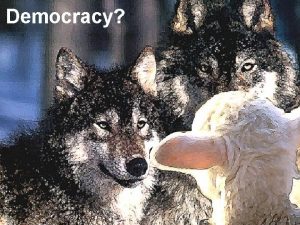Civics and Government 2 Government Conceptual Lens Democracy






























































































- Slides: 94

Civics and Government 2 Government Conceptual Lens: Democracy 2. 1 Analyze the structures of national, state and local governments in terms of ways they are organized to maintain order, security, welfare of the public and the protection of citizens

Preamble to the US Constitution

We the People. . • The Constitution was created for the people by the people • Written for the common man – not for a king – Fear of revolution • Popular sovereigntythe people have the power

In Order to Form a More Perfect Union • The union of the United States would be more perfect than they were under the Articles of Confederation (the first constitution) – The Articles of Confederation were scrapped and replaced with a better more perfect document – the US Constitution

Establish Justice • Injustice, unfairness of laws and in trade, was of great concern to the people of 1787. • People looked forward to a nation where – courts were established with uniformity (due process) – trade within and outside the borders of the country would be fair and unmolested – Today, we enjoy a system of justice that is one of the fairest in the world.

Insure Domestic Tranquility • The framers hoped that the new powers given the federal government would prevent rebellions from the people

Provide for the Common Defense • The new nation was fearful of attack from all sides • No one state was really capable of fending off an attack from land or sea by itself – Wary eye on Britain and Spain, – Indian attacks • No one of the states could fight alone – They needed each other to survive in the harsh world of international politics of the 18 th century.

Promote the General Welfare • The whole point of having tranquility, justice, and defense was to promote the general welfare – to allow every state and every citizen of those states to benefit from what the government could provide.

Secure the Blessings of Liberty to Ourselves and Our Posterity • Hand in hand with the general welfare, the framers looked forward to the blessings of liberty — something they had all fought hard for just a decade before. • They were very concerned that they were creating a nation that would resemble something of a paradise for liberty, as opposed to the tyranny of a monarchy, where citizens could look forward to being free as opposed to looking out for the interests of a king

“living constitution” • The Constitution of the United States has flexibility – it adapts and changes over time – Elastic Clause • As society changes, the views and opinions of the nation change

Forms of Government • • • Parliamentary Oligarchy Dictatorship Theocracy Anarchy Representative Democracy (Republic)

Parliamentary Government • Constitutional monarchy • Governing body: Parliament – Bicameral – House of Commons – Elected by the people – House of Lords – Appointed by the monarch • Leader: Prime Minister – selected by Parliament – Leader of the majority party or coalition • Head of State: Monarch (King or Queen) • Example: Great Britain

Oligarchy • Shared dictatorship • The ruling body is made up of a committee – Get their wealth from social status, military, or wealth • Each committee member has absolute power over a certain part of the government • Example: South Africa in the 20 th Century

Dictatorship • One person rules with complete and absolute power • They do not answer to the people • Some dictatorships are totalitarian –they control the economic, social, personal, and cultural lives of the people • Examples: Hitler’s Germany, Stalin’s Soviet Union

Theocracy • Government controlled by one or more religious leaders • They claim to rule on behalf of God or the gods worshipped in their country • Rulers respond to divine guidance and not to the people • Example: Iran

Anarchy • • No government exists Chaos, riots, no law and order No laws to govern the people Example: Somalia

Representative Democracy • Also called a republic • The power lies with the people of our nation • The people elect representatives to make decisions for them – Such as Congress, General Assembly, School Board • Example: United States

US Government Organization • Separation of powers • Article I – Legislative Branch – Role: Make Laws – Congress • Article II – Executive Branch – Role: Enforce Laws – President • Article III – Judicial Branch – Role: Interpret Laws – US Supreme Court and the Federal Court System

US Legislative Branch • • United States Congress Primary Function – To make laws Proposed laws are called bills Congress is “bicameral” – 2 houses or chambers – 1. – 2. Senate House of Representatives

US House of Representatives • Number of Members: 435 • Age Requirement: 25 • Term: 2 years • Representation: – Number of representatives per state based on population – Representatives represent constituents by district



Apportionment • The proportional distribution of the number of members of the U. S. House of Representatives on the basis of the population of each state • 435 Members in the House of Representatives • Are US citizens represented fairly with only 435 members to represent the entire US population? – Approximately 310, 000


House Leadership Speaker of the House • Function: Leader in the House of Reps • Role: – Presides over the House – Keeps order – Determines what bills will be heard on the House floor

House Majority and Minority Leader • Elected floor leaders of either the majority or minority party

House Majority and Minority Whip • Majority Whip/Minority whip – House: House of Representatives – Function: Mobilizing votes with their party – “Whip” up votes

US Senate • Number of Members: 100 • Age Requirement: 30 • Term: 6 years • Representation: – 2 Per State – based on equal representation – Senators represent an entire state

President of the Senate • Chamber: Senate • Vice President of the US • Function: Leader in the Senate

President Pro Tempore • Chamber: Senate • Function: Serves as leader in place of the Vice President

Senate Majority and Minority Leader • Majority Leader/Minority Leader – Chamber: Senate – Function: Elected leaders of either the majority or minority party

Senate Majority and Minority Whip • Majority Whip/Minority Whip – Chamber: Senate – Function: Make sure their party vote along party lines – “Whip” up votes

Types of Powers – Congress • Delegated Powers – Also called enumerated/expressed • Powers that are specifically spelled out • Examples: – – Power to tax Power to establish post offices Power to regulate trade Power to coin money

Types of Powers - Congress • Concurrent Powers – Powers that are shared by both the federal and state government • Examples: – – Taxation Making Laws Prisons Courts

Types of Power - Congress – Implied Powers • Powers that are given to Congress under the Necessary and Proper Clause or “Elastic Clause” • Not written down in the Constitution • Examples: – Acquiring new territory – Establishing a national bank

Types of Powers - Congress *Reserved Powers – 10 th Amendment! • Powers that are not given to the federal government are reserved for the states • Examples: – Education – Holding elections – Creating local governments

Powers – House of Representatives POWERS FOR ONLY THE HOUSE! • Power of the Purse – Must start all Appropriations Bills • Bills that authorize the government to spend money

Powers – House of Representatives POWERS ONLY FOR THE HOUSE! Power of Impeachment • The House votes to impeach or “accuse” an elected official of wrongdoing

Powers – House of Representatives POWERS ONLY FOR THE HOUSE! Breaks Tie in the Electoral College • If there is a tie in the Electoral College (Elects the President), the tie is broken by the House of Representatives

Powers - Senate • Powers given ONLY to the Senate • Filibuster – Attempt to block or delay Senate action on a bill by debating the bill for a long period of time – Tell jokes, read books, etc. • Cloture – Ends a filibuster – 3/5 vote of the Senate

Powers - Senate • Senate ONLY • Confirms Presidential Appointments • The President appoints people to certain positions • The Senate approves presidential appointments • Checks and balances!

Powers - Senate • Senate ONLY • Approves Treaties – The US enters into treaties (agreements) with other nations • The Senate approves treaties with other nations • Checks and balances!!

Powers - Senate • Holds Impeachment Trials – If an official is impeached by the House of Representatives, the trial is held in the Senate – Checks and balances!!

Powers of Both Chambers • Power to Declare War – War Powers Act – Passed after the Vietnam War – The US President can only send US troops abroad with the authorization of Congress • Checks and balances!! – UNLESS…. the US is already under attack

Punishments of Congress • Censure – When a senator or representative is publicly reprimanded for inappropriate behavior • Expulsion – When a senator or representative has done something so offensive they are removed from office • Immunity – No member of Congress can be arrested while attending Congressional sessions • Exceptions: treason, felony

Restrictions on Congress • Some powers are denied to Congress • Cannot interfere with Writ of Habeas Corpus - If you are placed in jail, specific charges must be filed against you • Bills of Attainder – Cannot convict someone of a crime without a trial • Ex Post Facto Laws – Cannot make a past activity illegal, even though it was not illegal at the time

How Governments Make Laws • Each level of government (Federal, State, and Local) must follow certain procedures to create a law • The Legislative branch of government MAKES LAWS (also called legislation) • Federal: Congress (House of Reps and Senate) – Laws • State: General Assembly – Statutes • Local: County or City Government – Ordinances

How a Bill Becomes a Law – Federal Introduced into House Introduced into Senate Assigned to Committee Subcommittee Makes Recommendations Committee Debates, Amends, Then Votes House Debates, Amends, Then Votes Senate Debates, Amends, Then Votes Introduced into Senate Introduced into House Assigned to Committee Subcommittee Makes Recommendations Committee Debates, Amends, Then Votes Senate Debates, Amends, Then Votes House Debates, Amends, Then Votes

How a Bill Becomes a Law – Federal Conference Committee • Made up of an equal number of Senators and Representatives • Different versions of the same bill may be passed • Reach a compromise on the bill (the bill is changed by both houses – it does not look exactly the same when it comes out of the House and the Senate) Final Vote • Both houses must vote on the final version of the bill – a compromise on the bill was reached in the Conference Committee President • The President signs the bill, making it an official law. • The President may also choose to veto the bill.

Role of the Three Branches of Government in the Federal Lawmaking Process Legislative Branch - Congress • • Makes laws (see previous lawmaking process) • Senate – Filibuster – talking on the Senate floor to delay the passage of a bill • May talk about anything • House of Representatives – Power of the Purse – all appropriations bills start in the House (bills that deal with spending tax dollars)

Role of the Three Branches of Government in the Federal Lawmaking Process • Executive Branch (President) – The president signs the bill into law – If the president takes no action on a bill (does not sign or veto it) for ten days, the bill automatically becomes a law • But. . . . If Congress is not in session during that ten days, the bill is automatically vetoed – Pocket veto. – The president may also veto a law – reject it • If this occurs, the Legislative Branch (Congress) may override the president’s veto with a 2/3 vote

Role of the Three Branches of Government in the Federal Lawmaking Process • Judicial Branch (Supreme Court and Federal Courts) – The Supreme Court and federal courts interpret the laws – Example: Brown v. the Board of Education of Topeka, Kansas

Watch the Video • http: //beta. congress. gov/legislative-process • http: //www. c-span. org/video/? 58004 -1/billbecomes-law

Today: Read pages 148 -152 in the Civics book Do Reading Focus questions 1, 2, 3 pg. 148 Do Taking Notes pg. 148 Do Reviewing Ideas and Terms 1 A -B, 2 A - B, 3 A – B, pg. 152 • Do Sequencing pg. 152 • Do Worksheet pg. 151 • •

Quiz • 1. Where can a bill start? (2 places) • 2. What can the president do to a bill? • 3. What are the places where bills are debated called? • 4. What is the action of blocking a bill by talking called?

US Executive Branch • Primary Function: To enforce laws • The President of the United States

Qualifications to be President • Age: 35 • Citizenship: Natural born US citizen • U. S. Residence: Lived in the US at least 14 years • Term Length: 4 years – 22 nd Amendment – US President is limited to 2 terms in office – 20 th Amendment – States when presidential terms begin and end (4 year term) – President is inaugurated on Jan. 20 • Elected by: The Electoral College

Presidential Succession • 25 th Amendment – establishes Presidential succession – President – Vice President – Speaker of the House – President Pro Tempore of the Senate

Presidential Roles • Chief Executive – President has the power to appoint officials such as Cabinet members or judges – Executive Orders – President directs government agencies to take certain actions – Executive Agreements - Agreement between the US and another nation that does not require Senate approval

Presidential Roles • Commander in Chief – President serves as head of the military forces

Presidential Roles • Chief Diplomat – Treaty – Formal agreement between two or more nations – Meets with leaders of other countries

Presidential Roles • Legislative Leader – President can veto laws passed by Congress – Proposes budgets, programs, and legislation to Congress

Presidential Roles • Party Leader – Head of the political party he represents – For example, President Obama is the leader of the Democratic party

Head of State • State of the Union address • Given every year in January to a joint session of Congress (both the House of Representatives and Senate)

Presidential Roles • Judicial Powers: – Pardons – Excuse a person for being punished for a criminal offense – Commutations – Shorten the time someone must spend in prison for a crime – Reprieves – Delay a sentence – new evidence – Supreme Court Justices and Federal Judges – Appoints Supreme Court Justices • Senate confirmation

Quiz 1. Who becomes president if the president dies? 2. Name two roles of the president (what jobs does he do? ) 3. When it comes to a prison sentence, name one thing the president can do to it. 4. Name two qualifications that must be met to become president.

The United States Supreme Court • Article III - The Judicial Branch • Primary Function: To interpret laws through judicial review • Highest court in the land

The United States Supreme Court • Nine Supreme Court Justices (Judges) • Head of the Supreme Court: Chief Justice of the United States • Eight others are called associate justices • Appointed by the President • Confirmed by the Senate • Serve for Life

Judicial Review • Established by Marbury v. Madison • Has final say on whether an action or law violates the Constitution • It can OVERTURN (reverse) decisions made by lower federal and state courts • Example of Checks and Balances

Other Powers of the Supreme Court • Declare executive actions unconstitutional – Certain actions taken by the executive branch may be declared unconstitutional • Chief Justice presides over impeachment trials – If the President is impeached • Examples of checks and balances

Quiz • • What is the job of the judicial branch? What is the highest court in the U. S. ? What is judicial review and who uses it? Name one way the judicial branch checks the legislative branch • Name one way the judicial branch checks the executive branch

North Carolina Government • Principles in the NC Constitution: – Separation of Powers – Checks and Balances – Popular Sovereignty – Protection of Individual Rights

Principles of the North Carolina Constitution • Principles found in the US Constitution are also found in the NC Constitution o Separation of powers – three branches of government – legislative, executive, judicial o Checks and balances – each branch checks and balances the power of the other branches to prevent the misuse of power o Popular sovereignty – Political power is derived from the citizens of NC

North Carolina Government • Article I – Declaration of Rights – Lists the rights enjoyed by the citizens of NC – See page 2 in your notes

North Carolina Government • Article II – Legislative Branch • Legislative Body – General Assembly • Purpose: to make state laws (statutes) • Bicameral – 2 chambers – House of Representatives – 120 – Senate - 50

North Carolina Government • Article III – Executive Branch • The Governor of North Carolina • Purpose: to enforce state laws (statutes) • Governor’s Cabinet – Appointed by the governor • Council of State – Elected by the people – Includes the Lt. Governor

North Carolina Government • Article IV – Judicial Branch • North Carolina’s Court System

Role of the Three Branches of Government in the State Lawmaking Process • Legislative Branch (General Assembly) – Makes laws (see previous lawmaking process) – NC House of Representatives and NC Senate

Role of the Three Branches of Government in the State Lawmaking Process • Executive Branch (NC Governor) – The governor signs the bill into law – If the Governor takes no action on a bill (does not sign or veto it) for ten days, the bill automatically becomes a law • But. . . . If the General Assembly is not in session during that ten days, the bill is automatically vetoed – Pocket veto. – The governor may also veto a law – reject it • If this occurs, the Legislative Branch (General Assembly) may override the governor’s veto with a 3/5 vote

Role of the Three Branches of Government in the State Lawmaking Process • Judicial Branch (NC Supreme Court and State Courts) – The NC Supreme Court and state courts interpret the laws made by the General Assembly

US Constitution - Structure • Preamble – “We the People” • Article I – The Legislative Branch • Article II – The Executive Branch • Article III – The Judicial Branch • Article IV – Relations Among the States • Article V – Amending the Constitution • Article VI – Supremacy of the National Government • Article VII - Ratification • Bill of Rights (1 st 10

NC Constitution - Structure • • • • Preamble – “We the People” Article I – The Declaration of Rights Article II – The Legislative Branch Article III –The Executive Branch Article IV – The Judicial Branch Article V – Finance Article VI – Suffrage and Eligibility to hold office Article VII – Local Government (County and City) – administer charters Article VIII – Corporations Article IX – Education Article X – Homesteads and Exemptions Article XI – Punishments, Corrections, and Charities Article XII – Military Forces Article XIII – Conventions – Constitutional Amendments and Revisions Article XIV – Miscellaneous

Comparison of US and NC Constitutions Comparison US Constitution NC Constitution Preamble At the beginning. . . ”We the People of the United States” At the beginning. . . ”We, the people of the State of North Carolina Legislative Branch Article II Executive Branch Article III Judicial Branch Article III Article IV Individual Rights Bill of Rights (End of the document) Article I – Declaration of Rights Amendment Process Article V Amendments added to the end of the document Article XIII Amendments are incorporated into the document Suffrage (Voting) 15 th, 19 th, 26 th Amendments Article VI

Comparison of Powers between US and NC governments • United States – Foreign policy – Print money – Regulating trade with other nations – National defense – Declaring war – Taxation • North Carolina – Education – Elections – Establish local governments – Regulate trade within the state – Maintain a National Guard – Taxation

Democratic processes used at both the federal and state levels of government • • • Free and frequent elections Rule of law Private property rights Due process Individual rights (Bill of Rights, Declaration of Rights)

• • • Similarities between the Bill of Rights and the Declaration of Rights Right of assembly and petition Religious liberty Freedom of speech and press Search warrants Right to be informed of the charges against you Right to not incriminate yourself Right to confront your accusers Right to your own witnesses Right to a trial by jury No excessive bail or fines Right to bear arms No quartering of soldiers

County Government – • Legislative branch for the county – Board of Commissioners – elected – Make laws for the county called ordinances • Executive for the county – county manager – appointed by the Board of Commissioners

City Government • Also called municipalities • Legislative branch for the city – city council elected – Make laws for the city called ordinances • Executive for the city – city manager or mayor

Local Laws • County and city laws are called ordinances • Ordnances are voted on by the County Board of Commissioners • The Mayor City council • Ordinances are the result of the need for a local law • Ordinances affect the local level

City Government • Mayor-Council Plan – Mayor acts as the enforcer of city laws (ordinances) – Chief executive – No city manager • Council-Manager Plan – Mayor acts as a figure head, runs city council meetings – Chief executive is the city manager

Government Response to Social and Economic Changes • State: – Marriage amendment (Amendment One) – Changes to welfare • Local – Noise Ordinances

Types of US Government Agencies • Executive Agencies – Part of the executive branch – headed by cabinet departments • Regulatory Agencies – Regulate and enforce standards in the private sector – May be part of an executive cabinet department agency • Independent Agencies – Independent of executive cabinet departments – Created by an act of Congress • Government Corporations – a government corporation is a government agency that is established by Congress to provide a marketoriented public service and to produce revenues

Department of Health and Human Services • United States government’s principal agency for protecting the health of all Americans and providing essential human services • Agencies: – Food and Drug Administration (FDA) – Centers for Disease Control (CDC)

FDA • Food and Drug Administration • The FDA is responsible for protecting and promoting public health through the regulation and supervision of food and drug safety • The FDA is regulatory agency
 Nearsightedness
Nearsightedness Presidential vs parliamentary
Presidential vs parliamentary Diffraction by circular aperature
Diffraction by circular aperature Covex and concave
Covex and concave Holle lens
Holle lens Civics and economics final exam study guide
Civics and economics final exam study guide Civics and economics definition
Civics and economics definition Sejarah perkembangan civics dan pendidikan kewarganegaraan
Sejarah perkembangan civics dan pendidikan kewarganegaraan Civics360
Civics360 Civics sol review
Civics sol review Civics chapter 17
Civics chapter 17 Civics 360.org
Civics 360.org Civics eoc study guide
Civics eoc study guide Civics eoc review
Civics eoc review Civics eoc practice test
Civics eoc practice test Civics in practice
Civics in practice Civics interactive notebook
Civics interactive notebook Civics bell ringers
Civics bell ringers Civics
Civics Chapter 8 civics
Chapter 8 civics Civics
Civics Bicameral meaning
Bicameral meaning Flrea civics
Flrea civics National powers
National powers Definition of campaign in life orientation
Definition of campaign in life orientation Venn diagram of parliamentary and presidential
Venn diagram of parliamentary and presidential Mass society and democracy lesson 2
Mass society and democracy lesson 2 What type of government does voltaire recommend?
What type of government does voltaire recommend? Dryfus affair
Dryfus affair Chapter 10 an age of democracy and progress answer key
Chapter 10 an age of democracy and progress answer key Democracy vs dictatorship venn diagram
Democracy vs dictatorship venn diagram African charter on democracy, elections and governance
African charter on democracy, elections and governance Democracy and greece's golden age
Democracy and greece's golden age An age of democracy and progress
An age of democracy and progress Image formation by convex lens
Image formation by convex lens Astimatigma
Astimatigma Lens-shaped pluton with a round top and a flat bottom
Lens-shaped pluton with a round top and a flat bottom Optikem international
Optikem international Camera parts and functions
Camera parts and functions Magma
Magma Refraction by a lens
Refraction by a lens Mirror equation
Mirror equation A lens that curve outwards and are fatter in the middle
A lens that curve outwards and are fatter in the middle Equity and empowerment lens
Equity and empowerment lens Compound microscope dust shield
Compound microscope dust shield Bloom and lens flare
Bloom and lens flare Equity and empowerment lens
Equity and empowerment lens Conclusion on democracy
Conclusion on democracy Democracy ki paribhasha
Democracy ki paribhasha Form of democracy
Form of democracy The development of athenian democracy
The development of athenian democracy Skit definition
Skit definition Pluralist democracy
Pluralist democracy Democracy vs monarchy
Democracy vs monarchy Mascot international (lao) sole co. ltd
Mascot international (lao) sole co. ltd Mussolinis beliefs
Mussolinis beliefs Spineless leaders of democracy political cartoon
Spineless leaders of democracy political cartoon The romans borrowed the idea of democracy from the
The romans borrowed the idea of democracy from the Representative democracy examples
Representative democracy examples Definition of democracy by aristotle
Definition of democracy by aristotle Democracy vs communism political cartoon
Democracy vs communism political cartoon Representative democracy political cartoon
Representative democracy political cartoon Democracy vs communism cold war
Democracy vs communism cold war Pluralist democracy
Pluralist democracy Pluralist democracy
Pluralist democracy Chapter 7 citizen participation in a democracy answers
Chapter 7 citizen participation in a democracy answers Chapter 13 the rise of a mass democracy
Chapter 13 the rise of a mass democracy American democracy now chapter 13
American democracy now chapter 13 Chapter 12 lesson 1 jacksonian democracy
Chapter 12 lesson 1 jacksonian democracy What are the basic concepts of democracy
What are the basic concepts of democracy Parliamentary democracy
Parliamentary democracy Ap gov types of democracy
Ap gov types of democracy 5 values of democracy
5 values of democracy Worlds oldest democracy
Worlds oldest democracy Barrington moore no bourgeoisie no democracy
Barrington moore no bourgeoisie no democracy Positive effects of democracy
Positive effects of democracy Oligarchy citizen participation
Oligarchy citizen participation Direct democracy political cartoon
Direct democracy political cartoon Characteristics of democracy
Characteristics of democracy Pillars of democracy
Pillars of democracy American democracy now chapter 14
American democracy now chapter 14 What is jacksonian democracy? *
What is jacksonian democracy? * Do you think jackson’s indian policy promoted democracy
Do you think jackson’s indian policy promoted democracy Advantages of democracy
Advantages of democracy Bibi ka maqbara
Bibi ka maqbara Characteristics of democracy
Characteristics of democracy Maysville veto
Maysville veto What meat did the aztecs eat
What meat did the aztecs eat Chapter 2 roots of american democracy answers
Chapter 2 roots of american democracy answers Many are with democracy
Many are with democracy Why many people are with
Why many people are with Chapter 1 section 3 basic concepts of democracy
Chapter 1 section 3 basic concepts of democracy Aristotle biography
Aristotle biography Theocracy can coexist with democracy true or false
Theocracy can coexist with democracy true or false Example for direct democracy
Example for direct democracy
